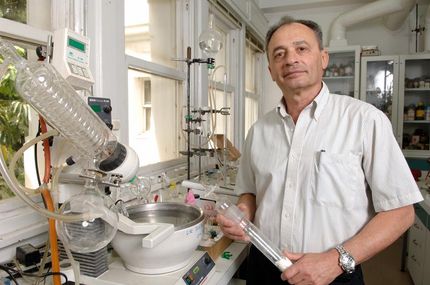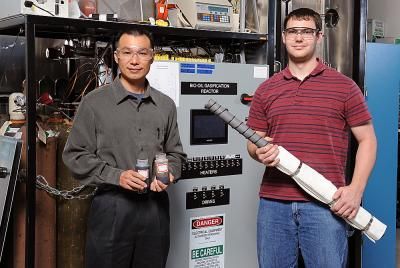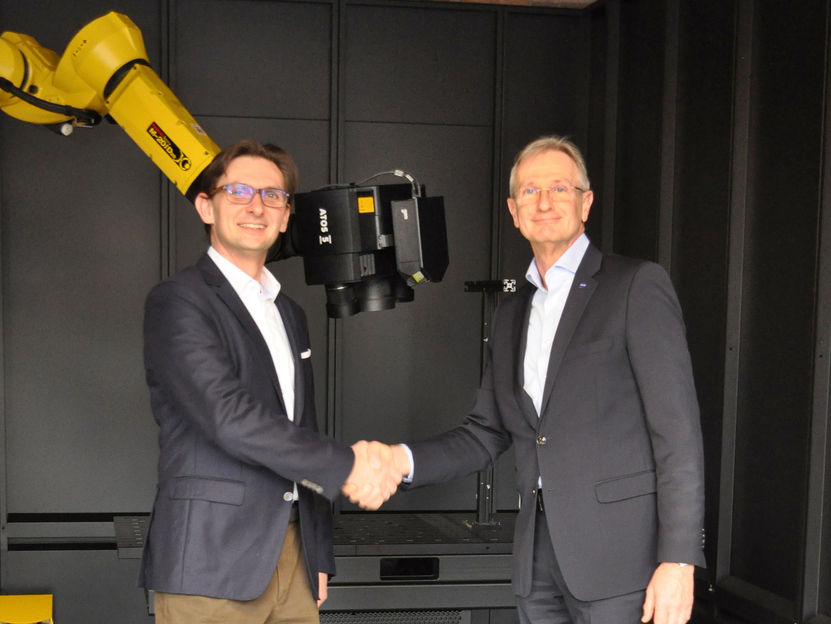UIC and Japanese chemists close in on molecular switch
The electronics industry believes that when it comes to circuits, smaller is better -- and many foresee a future where electrical switches and circuits will be as tiny as single molecules.
Turning this dream into reality may be a step closer, thanks to a collaboration between chemists at the University of Illinois at Chicago and Japan's RIKEN research institute. The international team successfully formed a single chemical bond on a single molecule, then broke that bond to restore the original molecule -- without disturbing any bonds to adjacent atoms within the molecule.
In essence, they created a molecular-sized electronic switch.
"The key thing we were after was reversibility," said Michael Trenary, UIC professor of chemistry and one of the lead researchers.
Trenary's lab specializes in understanding the workings of surface chemistry -- notably how molecules interact with metals. RIKEN operates a nanoscience center that offers a vibration-free platform for the tool called a scanning tunneling microscope used to perform this molecular-level task. With the ability to cool to temperatures approaching absolute zero to stabilize molecules, the microscope is equipped with a probe that can then manipulate single molecules.
"Others have done work at the single-molecule level, but nobody has been able to get the control we have," said Trenary.
Working at RIKEN, Trenary and his Japanese colleagues converted methylisocyanide to methylaminocarbyne on a platinum surface -- a chemical mix that holds particular promise in the field of molecular electronics.
Methylisocyanide was introduced as a gas into the microscope's vacuum chamber, and the molecules attached to the super-cooled platinum. Next, hydrogen gas was injected, which breaks up into atoms when it contacts the platinum. The hydrogen atoms bonded to the methylisocyanide to form methylaminocarbyne.
The microscope can image single molecules and atoms. Using its tiny probe, the researchers manipulated the tip to just above a single molecule and gave it a small electrical pulse. The hydrogen atom popped off -- reversibility was achieved.
"It's a way to alter the metal-molecular contact, which is why it's of interest to those in molecular electronics," Trenary said. "There's been a fair amount of research on using isocyanides for molecular electronics, but without understanding the details of the bonding interaction."
"You've got to first understand the surface chemistry in detail," he said. "When you understand that, then you can use these probes to manipulate, fine-tune and control the way you want to."
Most read news
Other news from the department science

Get the chemical industry in your inbox
By submitting this form you agree that LUMITOS AG will send you the newsletter(s) selected above by email. Your data will not be passed on to third parties. Your data will be stored and processed in accordance with our data protection regulations. LUMITOS may contact you by email for the purpose of advertising or market and opinion surveys. You can revoke your consent at any time without giving reasons to LUMITOS AG, Ernst-Augustin-Str. 2, 12489 Berlin, Germany or by e-mail at revoke@lumitos.com with effect for the future. In addition, each email contains a link to unsubscribe from the corresponding newsletter.




























































